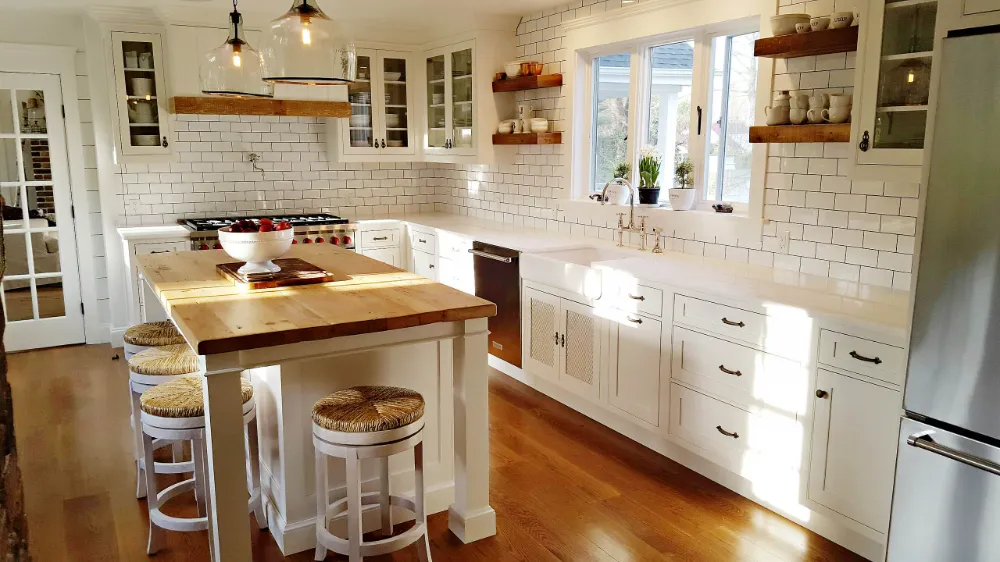The Allure of 1930s Farmhouse Kitchens
The 1930s farmhouse kitchen embodies a unique blend of rustic charm and functional design, a stark contrast to the sleek, modern kitchens we see today. This era was defined by the Great Depression, which influenced a shift toward practicality and resourcefulness in home design. Kitchens became the heart of the home, a place for families to gather, prepare meals, and share stories. The decor of a 1930s farmhouse kitchen reflects a sense of warmth, comfort, and simplicity. It’s a style that celebrates the beauty of everyday living, incorporating elements like natural materials, hand-crafted details, and a welcoming atmosphere. These kitchens tell a story of resilience and resourcefulness, making them a captivating source of inspiration for modern homeowners who want to infuse their spaces with character and history. The enduring appeal lies in its ability to create a cozy, inviting space that feels both familiar and timeless. The focus was on creating a space that was practical, inviting, and reflected a sense of comfort and simplicity, which appeals to homeowners even today.
Key Elements of 1930s Farmhouse Style
Several key elements define the 1930s farmhouse kitchen style. A prominent feature is the use of natural materials, such as wood for cabinetry, flooring, and countertops. The wood often features a warm, natural finish or a distressed look to enhance the rustic aesthetic. Another essential element is the presence of vintage or antique furnishings and accessories. This can include everything from kitchen tables and chairs to enamelware, cast iron cookware, and ceramic canisters. These items not only add character but also evoke a sense of history. Textiles played a significant role, with patterns such as gingham, floral prints, and ticking stripes commonly used for curtains, tablecloths, and dish towels. These elements work together to create a space that is both functional and visually appealing, a hallmark of the 1930s farmhouse kitchen design. The goal was to create a space that felt lived-in, comfortable, and reflected the values of family and community, making it a warm and inviting space for everyone.
Color Palettes for a 1930s Farmhouse Kitchen
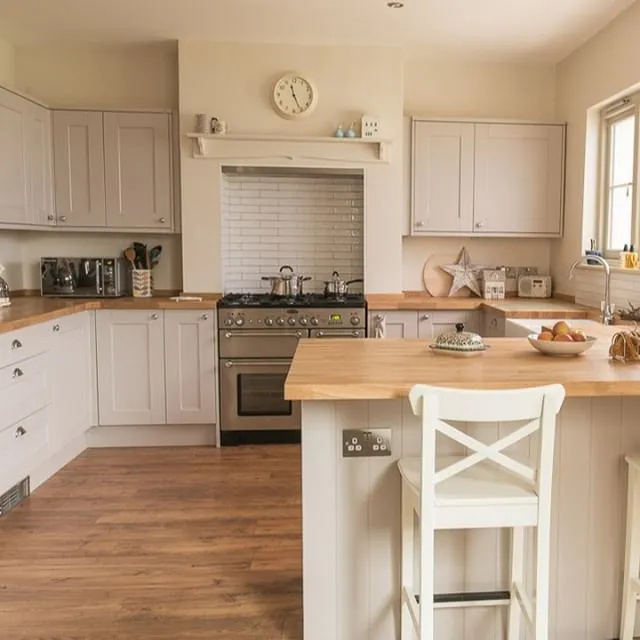
Color palettes in 1930s farmhouse kitchens leaned toward warm, inviting hues that complemented the natural materials used in the space. The goal was to create a space that felt cozy and welcoming. These kitchens often feature a combination of warm and neutral tones, creating a sense of balance. Think about creamy whites, soft yellows, muted greens, and light blues. These colors work together to create a soothing atmosphere. Wood tones, from light oak to darker walnut, also play a vital role, adding warmth and depth to the space. These colors often found their way onto walls, cabinetry, and decorative accents. The result is a kitchen that feels cheerful, inviting, and reflects the simple, practical aesthetic of the era. Choosing the right color palette can significantly transform a kitchen into a charming and historically inspired space.
Warm and Inviting Kitchen Colors
Warm colors, such as creamy whites, soft yellows, and muted greens, were frequently used to create a sense of comfort and coziness. These colors evoke feelings of warmth and hospitality, making the kitchen a welcoming space for family and friends. They work well with natural wood tones, creating a harmonious balance. These colors add to the inviting atmosphere of the kitchen, inviting people to linger and enjoy the space. The use of warm colors helps to create a sense of familiarity and comfort, which is essential for a kitchen that serves as the heart of the home. They are a perfect choice for those wanting to create a kitchen that feels friendly and approachable.
Neutral Tones and Their Impact
Neutral tones, such as off-white, beige, and light gray, provide a versatile backdrop that allows other design elements to shine. They create a sense of spaciousness and brightness, making the kitchen feel larger and more open. Neutral colors also serve as a perfect canvas for the addition of colorful accents and vintage decor. By using neutral tones, you can highlight the unique character of vintage furnishings and accessories. This provides a timeless appeal and ensures that the kitchen remains stylish and adaptable over time. This creates a sense of harmony and balance, allowing you to create a kitchen that is both visually appealing and functional.
Incorporating Vintage Furnishings
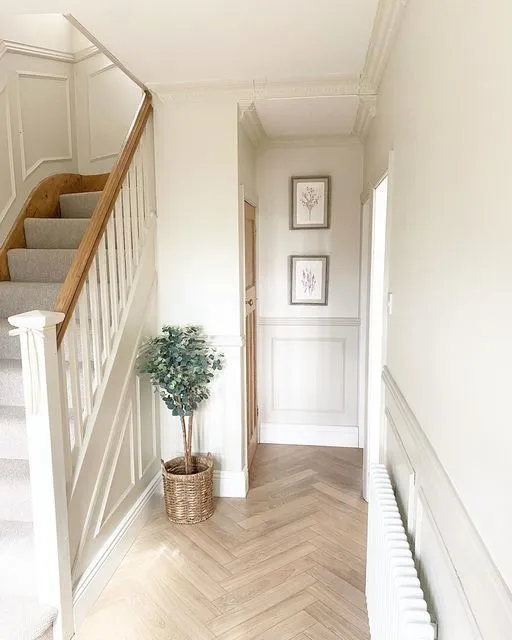
Vintage furnishings are crucial for achieving an authentic 1930s farmhouse kitchen look. Consider incorporating items like a vintage enamelware collection, cast iron cookware displayed on open shelving, and ceramic canisters for storing dry goods. These elements add character and a sense of history. Seek out antique kitchen tables and chairs, which provide a focal point for the dining area. Look for pieces with simple, functional designs that reflect the era’s aesthetic. Vintage accessories can be found at flea markets, antique shops, and online marketplaces. They introduce a unique touch to your kitchen. By incorporating vintage furnishings, you can transform your kitchen into a space that feels warm, inviting, and full of character. The key is to mix and match different pieces to create a space that feels both stylish and functional.
Choosing the Right Cabinetry
Cabinetry plays a pivotal role in defining the overall style of a 1930s farmhouse kitchen. Choose cabinets with simple, Shaker-style doors or those with glass-fronted uppers to display vintage dishware. Opt for natural wood finishes or paint the cabinets in soft, muted colors, such as creamy white or light gray. Consider open shelving to showcase your favorite dishware and accessories. This enhances the rustic charm. Vintage-style hardware, such as bin pulls and cup pulls, can also add authenticity and visual appeal. Remember that the goal is to create a kitchen that reflects the practicality and simplicity of the era while still offering a stylish and functional space. This will create the right aesthetic, adding to the overall charm and practicality of the kitchen.
Vintage Kitchen Tables and Chairs
The kitchen table and chairs are essential to the farmhouse aesthetic, offering a central place for meals and gatherings. Look for a solid wood table with a simple, sturdy design. Tables with a distressed finish or a natural wood stain work well. Pair the table with vintage chairs, such as Windsor chairs, ladder-back chairs, or those with a spindle back. Consider a mix-and-match approach to add character and visual interest. Don’t be afraid to use a bench for seating, especially if you have a large family or like to entertain. Adding a tablecloth or placemats can enhance the charm. They should embody simplicity and functionality. Remember that your kitchen table should provide a warm, inviting place for family and friends to gather and enjoy each other’s company.
Essential Kitchen Accessories and Decor
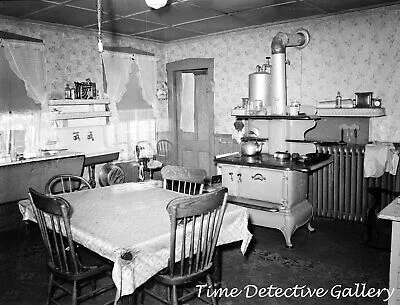
Accessories and decor bring personality and charm to the 1930s farmhouse kitchen. Incorporate vintage items like enamelware, ceramic canisters, and cast iron cookware to add authenticity. Display your favorite pieces on open shelving or in glass-fronted cabinets. Textiles play a significant role in the design, with gingham curtains, floral tablecloths, and ticking stripe dish towels bringing warmth and coziness. Consider using a vintage-style apron and oven mitts to add a practical and decorative touch. Accessories provide an opportunity to add personal touches. The goal is to create a space that feels inviting and full of character. The right accessories can truly transform your kitchen into a warm and inviting space that reflects the values of the era.
Vintage Lighting Fixtures
Lighting plays a vital role in setting the mood in a 1930s farmhouse kitchen. Choose vintage-style light fixtures to enhance the overall aesthetic. Consider using pendant lights over the kitchen island or breakfast nook. These are a great way to add both light and style to the space. Another option is to use a vintage-style chandelier over the dining table for a touch of elegance. Wall-mounted sconces can also add a warm and inviting glow. Look for fixtures made of materials like metal, glass, or enamel. Select a lighting option that suits the overall design. This will provide both functional illumination and aesthetic appeal to the space. The right lighting will enhance the warmth and create a cozy and inviting atmosphere.
Textiles and Fabrics for a Cozy Feel
Textiles are crucial for achieving the cozy, inviting atmosphere of a 1930s farmhouse kitchen. Choose fabrics in classic patterns like gingham, floral prints, and ticking stripes. Use these patterns for curtains, tablecloths, and dish towels to create a cohesive look. Consider using linen or cotton fabrics for their natural texture and durability. Add a vintage-style apron or oven mitts for a practical and decorative touch. These textiles add warmth and visual interest to the kitchen. They play a key role in creating a welcoming space, reminiscent of a simpler time. Using the right textures and fabrics helps achieve the perfect look and feel.
Modernizing Your 1930s Farmhouse Kitchen
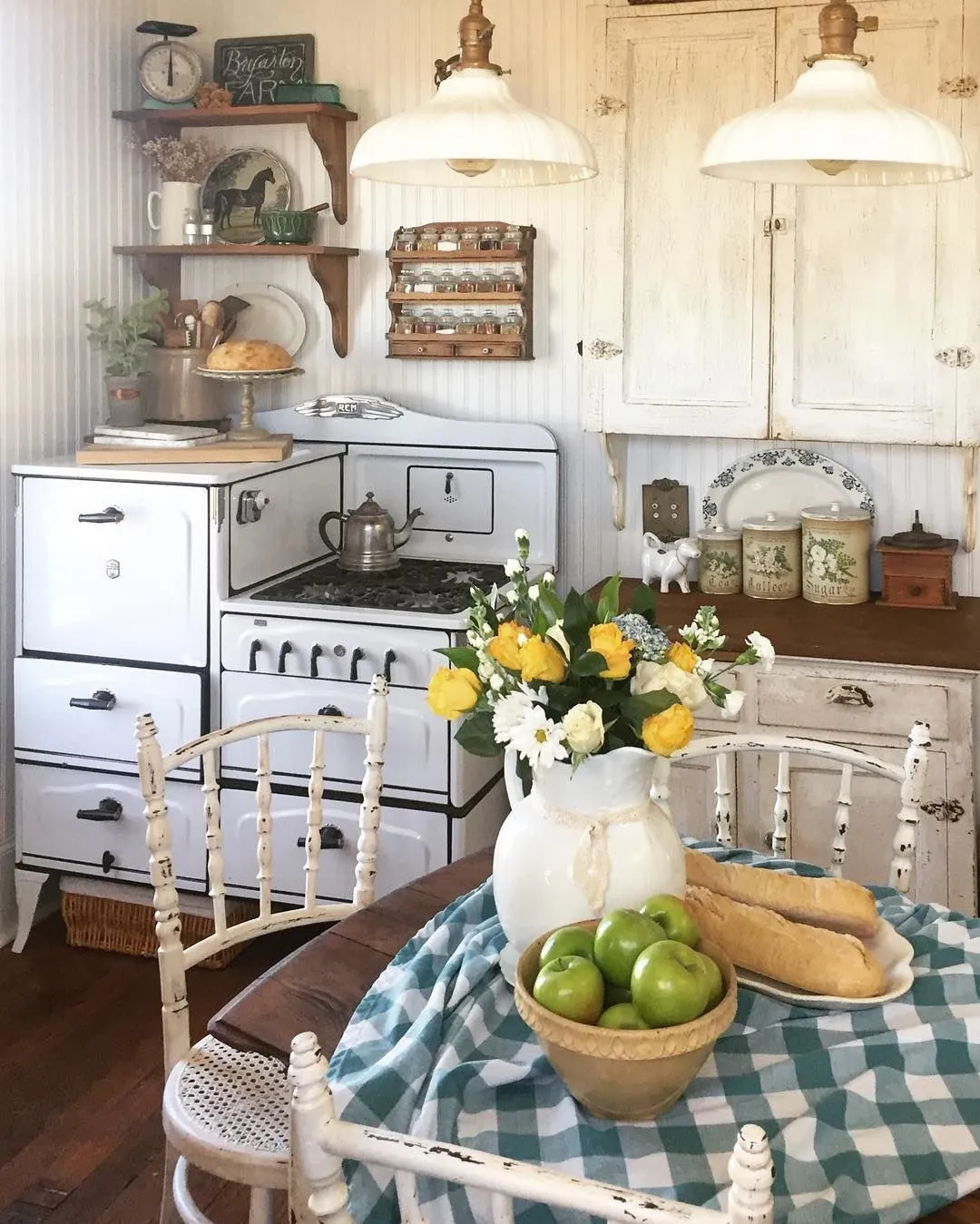
While embracing the charm of the 1930s farmhouse kitchen, you can incorporate modern conveniences for a more functional space. Integrate updated appliances with a vintage aesthetic. Consider a retro-style refrigerator or an apron-front sink. This seamlessly blends old-world charm with modern functionality. Incorporate modern lighting, such as recessed lighting or track lighting. This ensures the kitchen is well-lit and practical for everyday use. By blending historical design elements with contemporary conveniences, you can create a kitchen that is both stylish and perfectly suited for modern living. This will allow you to enjoy the best of both worlds – the charm of the past with the practicality of the present.
Blending Old and New Design Elements
A successful kitchen design blends vintage elements with modern conveniences. Combine vintage cabinets with a modern countertop. This gives a balance of old and new. Mix antique furniture with contemporary appliances. Use modern lighting fixtures with a vintage aesthetic. Incorporate modern colors with vintage accessories. Consider using a modern range hood with a vintage-inspired design. The key is to create a balanced look that reflects your personal style. This helps create a kitchen that is stylish, functional, and timeless. The goal is to create a harmonious blend. The blend of old and new creates a visually appealing and practical space.
Maintaining the Authentic Charm
Preserving the authenticity of the 1930s farmhouse kitchen involves a commitment to detail. Choose materials and finishes that reflect the era’s aesthetic. Incorporate vintage accessories. Avoid modern trends that might detract from the historical feel. Keep a focus on the original design intent. Prioritize quality craftsmanship and natural materials. Research the design elements. This helps to ensure the kitchen maintains its authentic charm. The aim is to create a space that feels genuine. By paying close attention to detail, you can create a kitchen that is both functional and a tribute to the era.
In conclusion, the 1930s farmhouse kitchen is a testament to a simpler time, a place where functionality, comfort, and a strong sense of community came together. By incorporating key elements like natural materials, vintage furnishings, warm color palettes, and thoughtful accessories, you can create a space that celebrates the enduring charm of this classic design. Whether you’re undertaking a full remodel or simply adding a few vintage touches, embracing the 1930s farmhouse style is a beautiful way to infuse your kitchen with warmth, personality, and a touch of history. It’s about creating a space that feels like a warm embrace. It is a place where memories are made. It is the heart of the home.
